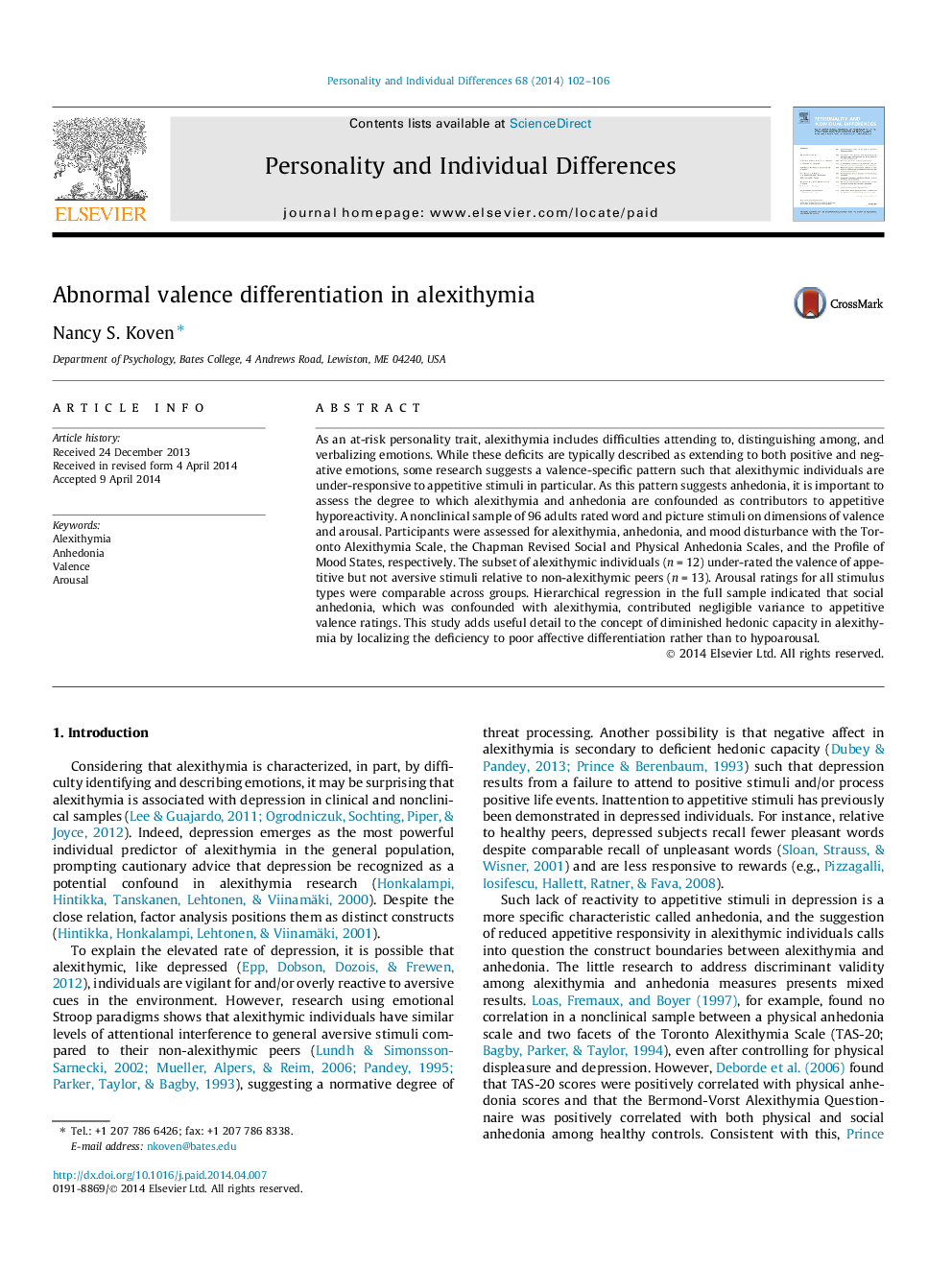| Article ID | Journal | Published Year | Pages | File Type |
|---|---|---|---|---|
| 7252226 | Personality and Individual Differences | 2014 | 5 Pages |
Abstract
As an at-risk personality trait, alexithymia includes difficulties attending to, distinguishing among, and verbalizing emotions. While these deficits are typically described as extending to both positive and negative emotions, some research suggests a valence-specific pattern such that alexithymic individuals are under-responsive to appetitive stimuli in particular. As this pattern suggests anhedonia, it is important to assess the degree to which alexithymia and anhedonia are confounded as contributors to appetitive hyporeactivity. A nonclinical sample of 96 adults rated word and picture stimuli on dimensions of valence and arousal. Participants were assessed for alexithymia, anhedonia, and mood disturbance with the Toronto Alexithymia Scale, the Chapman Revised Social and Physical Anhedonia Scales, and the Profile of Mood States, respectively. The subset of alexithymic individuals (n = 12) under-rated the valence of appetitive but not aversive stimuli relative to non-alexithymic peers (n = 13). Arousal ratings for all stimulus types were comparable across groups. Hierarchical regression in the full sample indicated that social anhedonia, which was confounded with alexithymia, contributed negligible variance to appetitive valence ratings. This study adds useful detail to the concept of diminished hedonic capacity in alexithymia by localizing the deficiency to poor affective differentiation rather than to hypoarousal.
Keywords
Related Topics
Life Sciences
Neuroscience
Behavioral Neuroscience
Authors
Nancy S. Koven,
